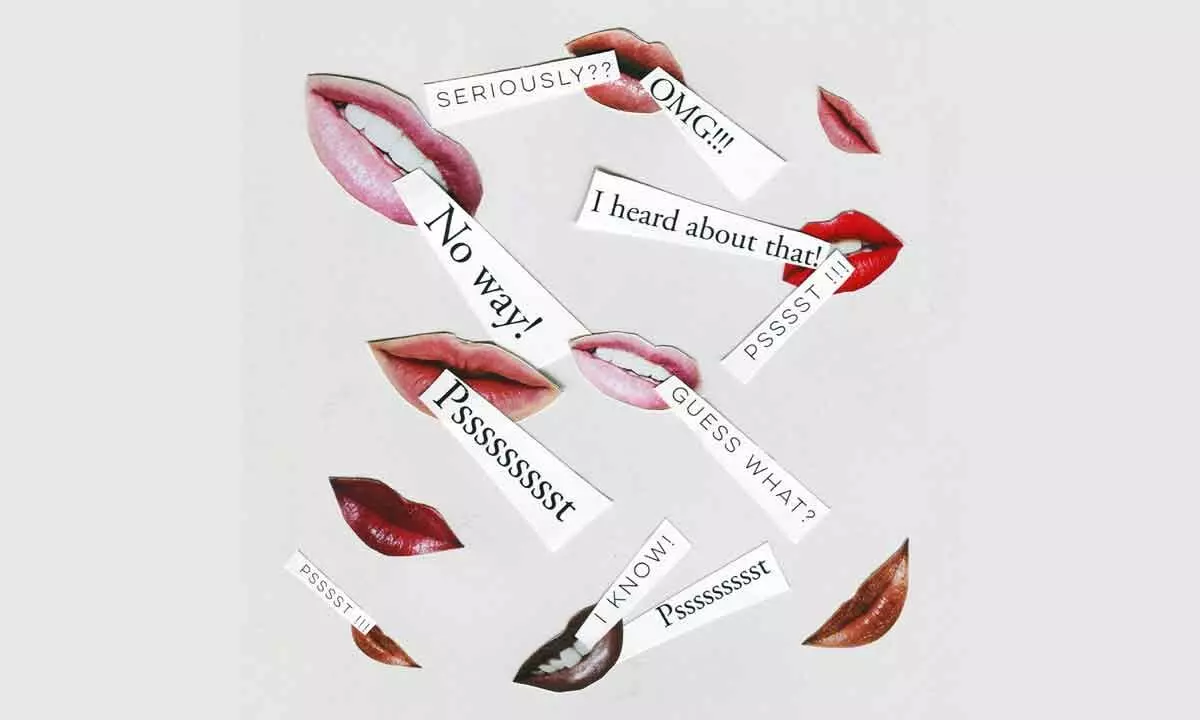SOTTO VOCE: The power of rumours

Every person, either as a human being, or as a citizen of a country, a province, or as a member of a structured and cohesive community, feels the need to participate in group activities such as sharing a news – good or bad. Yeah and, thanks to the explosive growth in recent times of the' social media,' the speed with which news travels has become amazing. The unfortunate part, however, is that, what with all the recent technological developments, the social media has also fallen a victim to the ploys of unscrupulous manipulators. One often comes across exaggerated, if not totally false, versions of events cleverly designed to sensationalise otherwise innocuous events and cause anxiety, fear and tension. While the truth takes a reluctant backseat, rumours are soon on unbridled rampage and chaos and confusion prevail in an otherwise peaceful and contented community. To borrow the idiom of the modern social media 'slanguage', rumours often go 'viral'.
Every organisation or community has its own route through which information travels, from source to receiver. In every organisation such as the secretariat of a state government, for instance, There is to be found what is known as the' grapevine,' or an informal network through which information travels. The term 'grapevine' finds its origin in
the times of the American Civil War, when people compared telegraphic lines to strings used to train vines.
Rumours need not always be of the harmful kind although they may be slightly exaggerated. Those which correspond roughly to the truth usually emerge from what is popularly known, especially in media circles, as a 'reliable source,' an expression usually used to describe a source that is known for putting out information or views founded on strong and credible evidence. Or, to use the idiom of the horse racing circles, news that has come straight from the 'horse's mouth,' On the contrary, news emerging from sources that can offer no proof about its being true or otherwise, is generally termed as 'unconfirmed'.
It must be conceded, however, that no matter how reliable or otherwise a rumour is, in the ultimate analysis fact triumphs over fiction and the 'truth will out,' to use a well-known expression that was first used by – who else? – William Shakespeare in his play 'The Merchant of Venice'.
Among the most sensational rumours that rocked the whole world in the last several decades, two that stand out, in my view, were the one about the Musi river floods in Hyderabad city in 1970, and someone decade earlier, the rumour which, on February 4 1962, had the entire world in the grip of fear and apprehension, namely, that the sun the moon and all the planets from Mercury to Saturn were clustered within a 17° arc of the sky. What was more, there was a total eclipse of the sun on that day and doom seemed inevitable to astrologers and students of Nostradamus. Somewhat of the same genre but at totally different level was the phenomenon that rocked many parts of the world on 20 September 1995. Just before sunrise on that day a worshiper in New Delhi made an offering of milk to a statute of Ganesha at a temple. When a spoonful of milk was held up to Ganesha's trunk the milk seemed to disappear, apparently consumed by the idol! Word spread quickly and by afternoon statues of Ganesha Temple all over India were seen taking in milk. The scientific community however attributed it to capillary action. And didn't stop there.
Very soon, Hindu temples in faraway places such as the UK, Canada, UAE and Nepal found the phenomenon being replicated and the Vishwa Hindu Parishad, a Hindu nationalist organisation, concluded that a miracle was occurring. The miracle had cascading effects on areas around major temples with vehicle and pedestrian traffic in New Delhi creating a gridlock lasting several hours.
In the parts of the city where a substantial number of Hindus resided, there was a sudden spurt in milk sales. People thronged temples and the queues spilled into the streets, in some cases reaching a length of over a couple of kilometres. Such was the strength of the faith people placed in the rumour that the phenomenon soon spread to other idols, too, such as the statue of Virgin Mary in Singapore and a Gandhi statue in Mumbai city. Workers of a political party in Basti town of Uttar Pradesh state also began to feed milk to statues of Ambedkar and Buddha which, apparently, the statues imbibed! Similar incidents occurred later in Bareilly in Uttar Pradesh state, Mumbai and parts of Trinidad and Tobago. Scientists, however, continued to maintain their stand that the apparent consumption of fluids by the various idols and statues was caused by capillary action.
Another unforgettable incident that comes to mind is the panic and terror that struck the citizens of Hyderabad on September 24 1970. Around 6:30 PM on the day, a rumour was spread that the Musi river, and the Osman Sagar (Gandipet) lake had breached, and waters were advancing towards the capital, threatening it with submersion. Absolute bedlam broke out, and people ran helter-skelter, desperate for cover. Everyone was so frightened the minute someone chanted "Paani Aaya Bhago," they simply dumped whatever they were doing, and rushed to safe places, with whatever belongings they could lay their hands upon. They took refuge in whatever shelter they could find until, thankfully, an hour or so later, a public announcement was made, clarifying that the rumour was false.
Before we conclude this lively discussion, a story for the readers. A person, upon being told that a friend of his was spreading rumours about his being a schizophrenic, retorted, "Well, three can play that game!"
(The writer is former Chief Secretary, Government of Andhra Pradesh)
(The opinions expressed in this column are that of the writer. The facts and opinions expressed here do not reflect the views of The Hans India)














